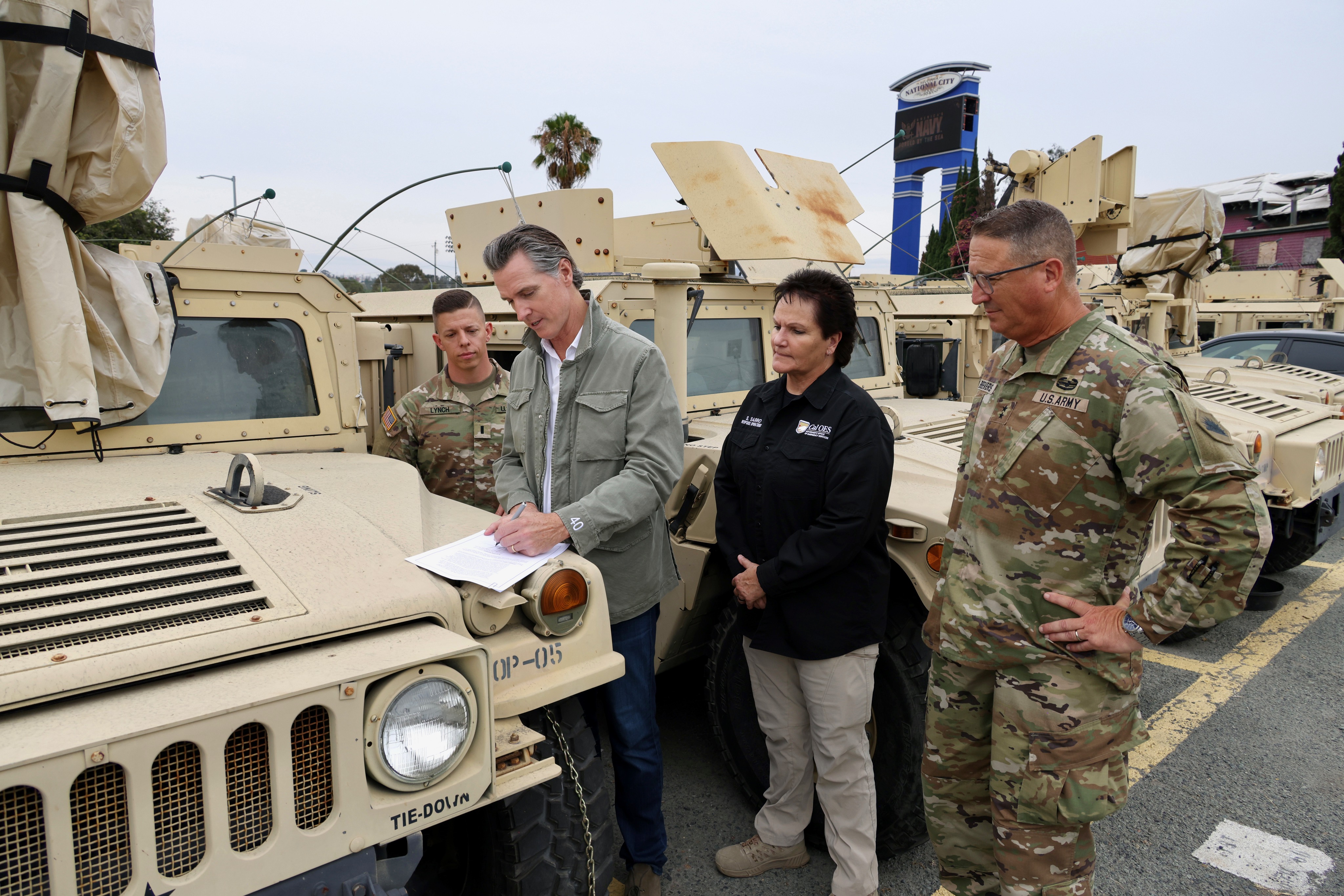WHAT YOU NEED TO KNOW: California continues to mobilize ahead of Hurricane Hilary’s projected landfall in Southern California. People are urged to take all necessary precautions today.
SACRAMENTO – Today, Governor Gavin Newsom proclaimed a state of emergency for much of Southern California to support Hurricane Hilary response and recovery efforts as the state continues mobilizing and coordinating resources ahead of the storm’s forecasted impacts starting today. The text of today’s emergency proclamation can be found here.
Hurricane Hilary is currently a Category 2 storm that the National Hurricane Center says is expected to bring “catastrophic and life-threatening flooding” to Baja California and the Southwestern U.S., including Southern California. Much of the impacts of the storm, including heavy rainfall and high winds, are expected to begin today and last through Monday.
At the Governor’s direction, there are currently more than 7,500 boots on the ground deployed to help local communities protect Californians from the impacts of Hurricane Hilary.

The Governor signed the emergency proclamation in San Diego while visiting with California National Guard troops. Also today, the Governor met with first responders and local officials, including San Diego Mayor Todd Gloria. He also was in touch with federal officials, including the White House.
What Governor Newsom said: “California has thousands of people on the ground working hand-in-hand with federal and local personnel to support communities in Hurricane Hilary’s path with resources, equipment and expertise. We’re mobilizing all of government as we prepare and respond to this unprecedented storm.”
PREPARE NOW: Here are the top 5 things Californians can do to stay safer during the storm.
HOW CALIFORNIA IS PREPARING:
State Operations Center Activated: At the direction of Governor Gavin Newsom, the State Operations Center at the Governor’s Office of Emergency Services (Cal OES) is currently activated and the state is closely monitoring impacts from rain, wind, flash flooding and potential power outages, as well as coordinating across state agencies to provide resources in preparation for other potential impacts. Additionally, the state has activated its Medical and Health Coordination Center to coordinate and monitor response efforts and has issued an alert to all health facilities in the state.
Prepositioned Resources: The state continues to coordinate the prepositioning of emergency resources across Southern California and the Central Valley in anticipation of Hurricane Hilary:
- The Emergency Medical Services Authority (EMSA) has assets on standby, including California Medical Assistance Teams (CAL-MAT), to augment local capacity, aid in evacuations, and support medical needs in communities impacted by flooding. The EMSA is ready to assist with Ambulance Strike Teams as necessary to support local communities.
- The Flood Operations Center is activated and has prepositioned flood fight materials should they be needed.
- The California National Guard has strategically prepositioned more than 350 soldiers and two dozen high water vehicles.
- CAL FIRE has prepositioned nine swift water rescue teams and urban search and rescue teams along with 290 strategically prepositioned engines.
- Cal OES, through the California Fire and Rescue Mutual Aid System, has deployed a total of over 700 local government firefighters and support staff, as well as 15 swift water rescue teams, two urban search and rescue companies and three regional urban search and rescue task forces.
Maintaining Roadway Safety: Approximately 2,000 Caltrans maintenance personnel in the region are on 12 hour shifts, 24 hours a day. They are installing pumps in flood-prone areas, such as Pacific Coast Highway/State Route 1 in Orange County, and monitoring burn scars for potential mudslides, especially in northern Los Angeles, San Bernardino and Riverside counties. Caltrans Southern California districts are opening emergency operations centers and are coordinating with city and county emergency operations centers as needed. Additionally, the California Highway Patrol has staffed more than 3,900 officers and other personnel in the region and has prepositioned equipment, activated limited emergency operations centers and has Special Response Teams on alert.
Protecting Vulnerable Communities: California is actively monitoring potential impacts to vulnerable communities, including unhoused individuals. The California Department of Social Services (CDSS) has reached out to local partners and licensed settings caring for some of the most vulnerable — including individuals with disabilities, older individuals, and unsheltered individuals — to help ensure that people have access to services should they need them. Additionally, the state is working with local officials to ensure mobile home communities are taking appropriate steps to prepare.
Coordinating With Private Sector: California continues to coordinate with major retailers, including Target, Wal-Mart, Lowe’s, CVS Health and others, as well as grocers to ensure essential supplies are available and emergency contingency plans are activated. Additionally, the state is coordinating with major fuel suppliers, utility providers and telecommunications companies to determine any needs of support to maintain essential services.
Closing State Parks and Beaches: The state is actively monitoring the storm’s impacts on state parks and making real-time decisions on closures as needed. Currently, California has closed 10 parks and has 600 staff on the ground to respond. The state is closing Silver Strand State Beach and Borderfields State Beach today and Orange Coast District and San Diego District beaches on Sunday and Monday, as well as increasing lifeguard services. The public is advised to stay out of the ocean during the storm. Additionally, state parks have proactively canceled reservations at campgrounds in high-risk areas.
